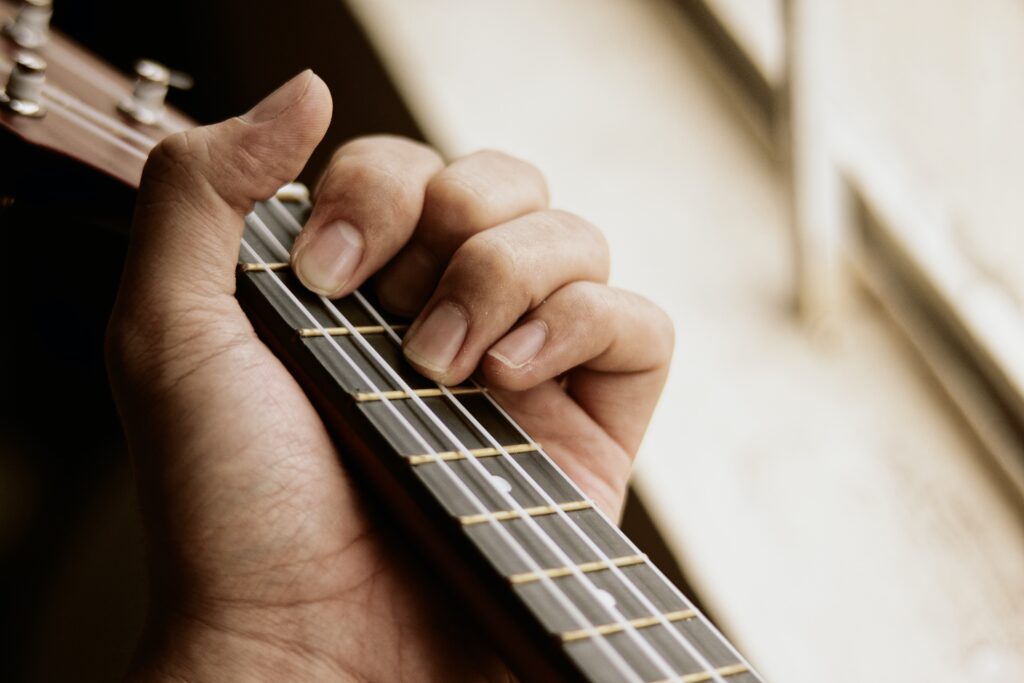You love the sound of a good guitar solo or strumming away to your favorite song. But did you ever stop and wonder what the difference is between a violin and a guitar?
If so, then you’re in luck! We’ll explore the various traits that make up each instrument – from body shape to tuning system – so that all guitar enthusiasts can discover exactly how each instrument makes its unique musical contribution.
So grab your axe and join us on this journey of exploration as we reveal all there is to know about guitars, violins, and their beautiful music-making capabilities.
Violin vs Guitar — How Are They Different?
First and foremost, you have to be aware that guitars and violins can each be broken down into a plethora of subgenres.
There are three different types of guitars: acoustic guitars, electric guitars, and semi-acoustic guitars. Meanwhile, there is a wide variety of violin types, including electric, contemporary, and baroque violins.
No matter what type of violin and guitar you compare, the differences will stay the same. Here’s how the violin and guitar differ in terms of different factors:
Playing Style
The violin and the guitar are both types of musical instruments that are put to a variety of uses by their respective players. Both of them have qualities and other aspects that set them apart from one another clearly and distinctly.
Playing the violin requires using a bow. Meanwhile, a guitar can be played either with the fingers or with the use of a pick. This is one of the visible differences between the two instruments and can also be a determining factor for some individuals.
Violins Use Fine Tuners; Guitar Only Have Pegs
The tuning pegs on a guitar are adjusted in a way that is different from that of a violin. There is only one way to tune a guitar, and that is by using the six tuning pegs that can be found on the head of the instrument. Each of the pegs is meant to be used in conjunction with a specific string on the guitar.
The tuning mechanism of the violin is different from that of other instruments. Tuning pegs and fine tuners are both essential components of a violin. They are used when the strings are either very loose or highly out of tune since even a very tiny turn of the peg can result in a significant shift in the pitch.
Violins Include Fingerboard; Guitar Include Fretboard
The fingerboard of a violin and the fretboard of a guitar are the same long strip of wood that runs the length of the neck of their respective instruments.
The fact that one is called a fretboard and the other a fingerboard already hints at the primary difference between the two. Frets are bits of metal that are attached to the fretboard. Frets are also known as “nuts.” When playing the guitar, you place your fingertips on the strings by pressing them down in the spaces that are left between the frets.
There are no frets to be seen on the fingerboard of the violin. When playing the violin, you need to push down on the strings in just the right spots to find the notes. The notes of the violin will be out of tune if you do not push the string in the right place.
Size Difference
A guitar is larger than a violin. This makes the violin much easier to bring along on vacations, camping excursions, or even just tote to your weekly violin lessons. For those that play the guitar, there are also portable versions of the instrument available, but those come with their caveats.
People who prefer to travel with a guitar may find travel (compact) guitars to be a better choice. The sound quality of a travel guitar is typically inferior to that of a standard guitar, which is one of the drawbacks of buying a travel model.
| Category | Violin | Guitar |
|---|---|---|
| Family | String | String |
| Size | Smaller | Larger |
| Playing Position | Horizontal | Vertical |
| Technique | Bowing | Strumming or Picking |
| Range | High | Low to High |
| Sound | Sweet and Mellow | Bright and Lively |
| Role in Music | Often Solo or Orchestral | Often Accompaniment or Part of a Band |
| Notable Players | Itzhak Perlman, Joshua Bell | Jimi Hendrix, Eric Clapton |
What is the difference between violin strings and guitar strings?
The main difference between violin strings and guitar strings is the number of strings they have. Violins typically have four strings while guitars usually have six.
In addition, the tuning systems are different as well – violins use a four-string system tuned in perfect fifths while guitars use a six-string system tuned in perfect fourths.
Also, violin strings are made from synthetic materials such as nylon or steel, while guitar strings are typically made from either wound metal or plain steel.
There are also differences in the sound quality of each instrument – as violins tend to have a much brighter and higher range of sound than guitars do. Violins are known for their piercing sound, while guitars produce a much more mellow and full sound.
Ultimately, it’s up to you to decide which strings best suit your playing style and preferences. Whether you prefer the bright sounds of a violin or the deep tones of a guitar, there’s something for everyone!
What does a guitar have that a violin doesn’t?
Guitars have a few advantages over violins – one of the most notable beings is that they typically have six strings compared to just four on the violin. This gives guitarists more options when creating their music and also allows them to switch up playing styles such as strumming, fingerpicking, or tapping.
Guitars also tend to be easier to play since they generally feature a slimmer body design that can fit comfortably against your chest while seated.
Finally, guitars are made from various materials such as wood or metal, whereas violins are usually constructed from a combination of synthetic and natural materials.
All in all, both instruments offer their unique advantages – so it’s just up to you to decide which one is better suited to your playing style and preferences. Thank you for reading!
Can you play a guitar with a violin string?
It is possible to play a guitar with violin strings, but it’s not ideal. The tuning system for violins is different from that of guitars – so if you tried to tune your guitar to the same notes as a violin, it would sound strange and out of tune.
Furthermore, the strings on a violin are thinner than those on a guitar – making them too weak to be used in a standard six-string configuration.
If you want to experiment with using violin strings on your guitar, it’s best to consult an experienced luthier who can advise you on what type and gauge of string would work best for your instrument. That way, you can find the right balance between tone and playability.
Ultimately, it’s always best to stick with the strings that were designed for your instrument – whether you’re playing a violin or a guitar. That way, you can ensure that your musical masterpiece is as perfect as possible!
All in all, violins and guitars each have their unique strengths and weaknesses when it comes to creating music – so there’s no single answer to which instrument is best for you.
Can I learn violin if you play guitar?
Yes, it is possible to learn violin if you play guitar. The learning process may require some adjustment and practice, as the techniques required for playing the violin are quite different from those used for playing guitar.
Various techniques needed for playing the violin such as vibrato, double-stops, slurs, and pizzicato can be challenging for guitar players who have not yet learned them.
To learn violin effectively as a guitar player, one must first become familiar with the instrument itself. This includes learning how to hold it correctly and how to orient your body about the instrument so that you can move freely while playing.
It also involves understanding how to position your fingers on the strings and how to maneuver the bow to produce the desired sound. After mastering these basic skills and techniques, you will then need to practice scales and arpeggios slowly until they become second nature.
Furthermore, having an experienced teacher can be invaluable when learning any new instrument – especially if that teacher has experience teaching both guitar and violin. A good teacher can provide guidance on technique development as well as tips on improving posture and finger placement.
Most importantly though, a knowledgeable teacher can help you learn more about music theory which is essential for becoming a proficient musician regardless of your chosen instrument.
Do violins cost more than guitars?
Violins can cost more than guitars depending on the quality of the instrument as well as its age and condition. Since violins are typically smaller and contain fewer parts, they tend to be more expensive than guitars which often include several extra pieces such as pickups or effects pedals.
In addition, violins require a great deal of care and maintenance to maintain their sound quality – thus making them a more costly investment over time.
So if you’re looking for a good instrument without breaking the bank, then it’s worth doing some research to find a violin that fits your needs and budget.
However, it is possible to find reasonably priced violins and guitars so you don’t necessarily have to break the bank to get a good quality instrument. Ultimately, it all comes down to what kind of sound you’re looking for and how much money you’re willing to invest.
Which is the most popular guitar or the violin?
This is a difficult question to answer since both instruments have their unique characteristics and enjoy widespread popularity in different parts of the world.
The guitar has traditionally been viewed as an instrument for popular music such as rock, blues, country, and jazz – however, it can also be used to create classical pieces with its wide range of tones and versatility.
Meanwhile, violins are primarily associated with classical music but have also found their way into various other genres including folk, bluegrass, and even pop.
At the end of the day, it boils down to personal preference as both instruments offer something special that no other instrument can replicate. So regardless of which one you choose – whether it’s the guitar or the violin – you’ll be sure to enjoy making beautiful music.
Bottom Line
These are just a few of the violin vs guitar differences. In the end, it comes down to a matter of preference. Some people prefer the violin because of its classical sound. Others choose the guitar because it is more versatile and can be used for a wider range of genres. And still, others enjoy playing both instruments!
No matter what your preference is, both the violin and the guitar can provide you with hours of enjoyment.






